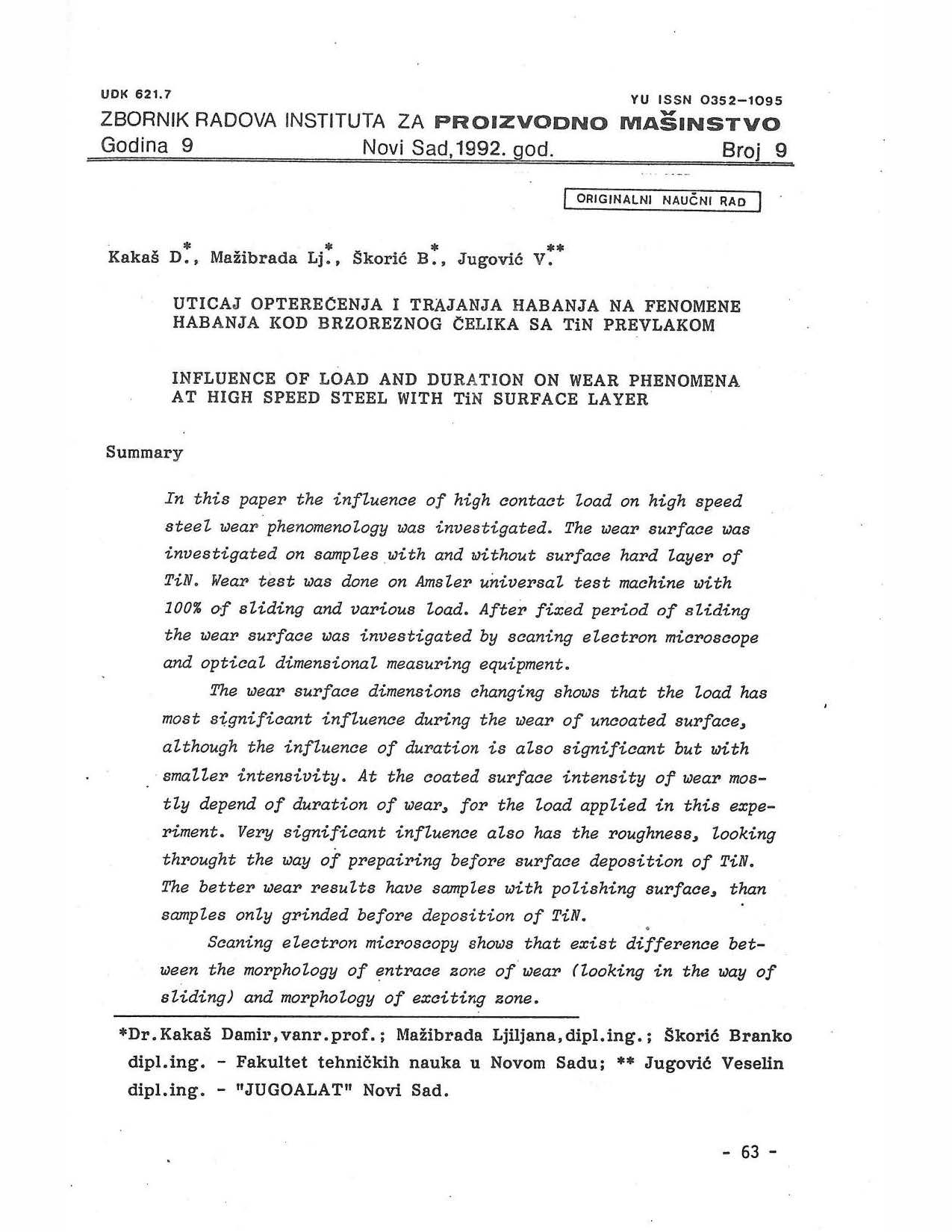Influence of load and duration on wear phenomena at high speed steel with tin surface layer

Published 1992-12-01
abstract views: 13 // FULL TEXT ARTICLE (PDF): 8
Keywords
- high-speed steel,
- wear surface,
- surface hard layer
How to Cite
Copyright (c) 2023 Journal of Production Engineering

This work is licensed under a Creative Commons Attribution 4.0 International License.
Abstract
In this paper, the influence of high contact load on high-speed steel wear phenomenology was investigated. The wear surface was examined on samples with and without a surface hard layer of TiN. Wear tests were conducted on an Amster universal testing machine with 100% sliding and various loads. After a fixed period of sliding, the wear surface was examined using a scanning electron microscope and optical dimensional measuring equipment. The change in wear surface dimensions shows that the load has the most significant impact during the wear of the uncoated surface, although the influence of the duration is also significant but with smaller intensity. For the coated surface, the intensity of wear mostly depends on the duration of wear for the load applied in this experiment. Roughness also has a very significant influence, depending on the preparation method before the surface deposition of TiN. Samples with a polished surface show better wear results than samples that were only ground before the deposition of TiN. Scanning electron microscopy reveals differences in the morphology of the entrance zone of wear (looking in the direction of sliding) and the morphology of the exit zone.

